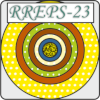Speaker
Description
It is assumed to develop new class of XSW methods in the «normal incidence – grazing exit» geometry using optical reciprocity principle. The complex structure of the fluorescent signal, measured in grazing angles (an analogue of the Kossel effect), will be used for determination of the atoms distribution profiles in layered systems or atomic positions in the crystal lattice, receiving information equivalent to that one from XSW experiments.
The most progressive approach for research, including with time resolution, is the so-called "X-ray cinema". The main idea of this approach is "study in one frame" without rebuilding the parameters of the experimental scheme (angles, energies). An important methodological task is the development of new experimental methods that make it possible to obtain information about the structural properties of research objects without scanning.
The using of ultra-bright sources of synchrotron radiation with micro- and nano-focusing will make it possible to maximally localize the method for studying small (nanoscale) objects and performing three-dimensional diagnostics with the required resolution.
The important task of modern materials science is the addition of a time coordinate to the study of the structural characteristics of inorganic and bioorganic objects and the transition to experimental methods with time resolution using synchrotron radiation sources. The development and application of synchrotron time-resolving research methods will allow to look inside nonequilibrium processes, self-organization processes, nonequilibrium phase transitions and fluctuation processes, as well as the effects of nonlinear dynamics of the electron subsystem and crystalline sublattices under resonant excitation.
The developed algorithm, which implements a position-sensitive energy-dispersive analyzer, made it possible to carry out such experiments using two-dimensional X-ray cameras.
Testing of the experimental scheme was carried out on layered W-Ti-W systems. Shown are the results of spectral-selective studies in the non-scanning mode in the grazing fluorescence emission geometry, which are equivalent to the data of the XSW method in the standard grazing incidence geometry. Multispectral analysis of the wave fields of fluorescent lines with different distributions can be used to reconstruct the structural parameters.
